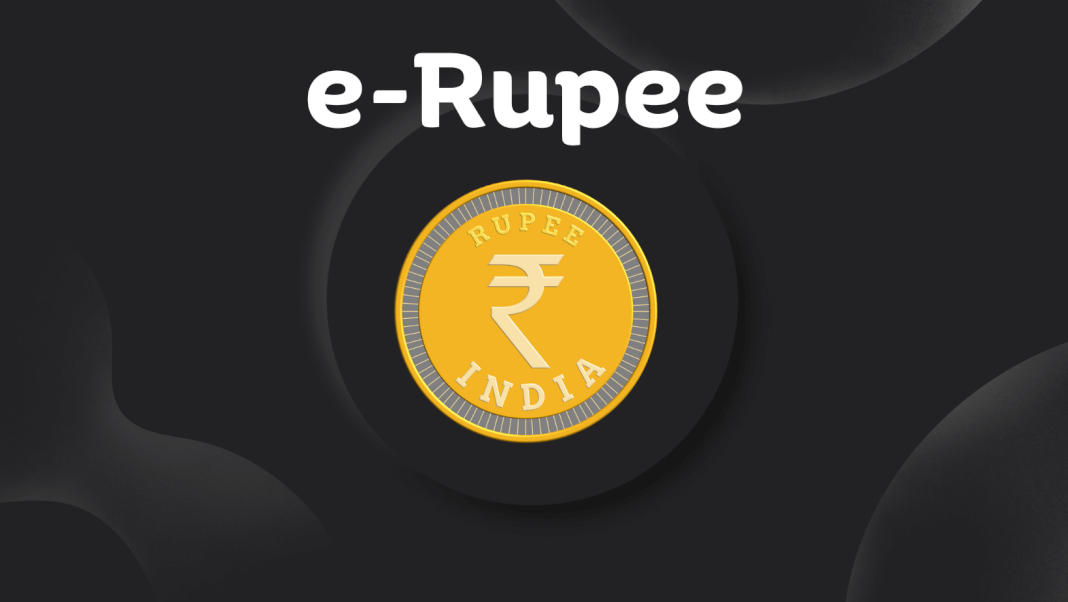The RBI launched its Central Bank Digital Currency (CBDC) in the form of eRupee (e₹). The e-Rupee as a digital rupee is launched for two user groups the retail groups and the wholesale segment on a pilot basis.
Form and legality: The e₹-R is an electronic form of the sovereign tender currency issued by the RBI on behalf of Government of India. It is in the form of a digital token (e₹-R), and it is a legal tender like the paper currency issued by the RBI.
Read: What is Central Bank Digital Currency?
Mode of the project: Pilot basis.
Groups for the issue of e₹: The e₹ was launched for two user groups – e₹-R for retail segments and e₹-W for wholesale segments.
Nature of digital rupee: The e₹-R is token based whereas the e₹-W is account based.
Launch: The e₹ for the wholesale segment (e₹-W) was launched on November 1st, 2022, whereas the e₹ for the retail segment (e₹-R) was launched on December 1st, 2022.
Liability nature for the RBI: e₹ is a liability of the RBI (like the currency note is a liability of the RBI).
Denominations for e₹: The e₹-R is issued in the same denominations that paper currency and coins are currently issued. As of March 2023, the e₹-R denominations include 50 paise (Rs 0.50), Re 1, Rs 2, Rs 5, Rs 10, Rs 20, Rs 50, Rs 100, Rs 200 and Rs 500. The e₹-W has no specific denomination.
Distribution and storage of e₹: The e₹ is distributed through intermediaries, i.e., banks. Users can make transactions in e₹-R through a digital wallet offered by the participating banks and can be stored on mobile phones/devices.
Transaction in e₹: Transactions in e₹ can be in two modes- Person to Person (P2P) and Person to Merchant (P2M). in the case of payments to merchants, it can be made through QR codes displayed by the merchants.
Features of e₹-R vis a vis physical cash: The e₹-R has almost all features of physical cash like trust, safety and settlement finality. The e₹-R, as in the case of cash, will not earn any interest. The e₹-R can be converted to other forms of money, like deposits with banks.
|
e-Rupee denominations in circulation and their share in total value as on end-March 2023 |
|
| Currency Denomination | Rs crores and share in total value (%) |
| 0.50 | 0.01 (0.2) |
| 1 | 0.04 (0.7) |
| 2 | 0.06 (1.0) |
| 5 | 0.12 (2.1) |
| 10 | 0.15 (2.6) |
| 20 | 0.23 (4.1) |
| 50 | 0.39 (6.9) |
| 100 | 0.83 (14.5) |
| 200 | 1.16 (20.4) |
| 500 | 2.71 (47.5) |
| 2,000 | — |
| Total e₹-Retail | 100 (5.70 Crores) |
| Total e₹-Wholesale | 10.69 crores |
| Total e₹ in circulation | 16.39 |
| Source: RBI Annual Report 2023 | |
Launching-locations: The pilot initially covered four cities, viz., Mumbai, New Delhi, Bengaluru and Bhubaneswar. Later it was extended to Ahmedabad, Gangtok, Guwahati, Hyderabad, Indore, Kochi, Lucknow, Patna and Shimla.
Participant banks: Eight banks participated in the pilot project. The first phase started with four banks, viz., State Bank of India, ICICI Bank, Yes Bank and IDFC First Bank in four cities. Four more banks, viz., Bank of Baroda, Union Bank of India, HDFC Bank and Kotak Mahindra Bank joined the pilot phase later.
Use case of e₹-W: The e₹-W in the initial phase will mainly be used for the settlement of secondary market transactions in government securities. This is expected to make the inter-bank market more efficient. The e₹-W is expected to reduce transaction costs by pre-empting the need for settlement guarantee infrastructure and may reduce settlement risk. According to the RBI, in future, other wholesale transactions, and cross-border payments will be the focus of the e₹-W project. The RBI Annual Report 2023 affirms that there will be more use for e₹-W. “During 2023-24, the Reserve Bank of India (RBI) aims at expanding the ongoing pilots in CBDC-Retail and CBDC-Wholesale by incorporating various use cases and features.”
An important development with the launch of the e₹ is that after its introduction, the currency in circulation in the economy now has three items: (1) Banknotes (2) Coins and (3) e₹. (source: RBI Annual Report 2023, P.181.)
According to the Annual Report of the RBI (2023), the value of e₹-Wholesale (e₹-W) and e₹-Retail (e₹-R) in circulation were Rs 10.69 crore and Rs 5.70 crore, respectively, as on March 31, 2023.
********









